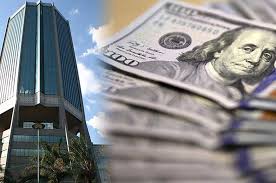Reserve money growth triggers markets rally
November saw a marked increase in the level of money supply in the country and this could explain the upsurge in the performance of the stock market as well as the uptick in the parallel market exchange rate.
Central bank Governor Dr John Mangudya is, however, not worried as the growth of reserve money is still below the targeted 25 percent quarterly growth.
Reserve money, which had averaged below $13 billion for the better part of the year from April till October, averaged $18 billion in November and was slightly below that in the first week of December.
According to statistics provided by the central bank, Reserve Money at the end of October stood at $15,5 billion and finished November sitting at $17,9 billion.
For the first week of December it had slightly decreased to $17,7 billion.
Major shifts in money supply were in banking sector deposits at the RBZ, which increased from $13,4 billion at the end of October to $15,5 billion by end of November.
In between the deposits reached a high of $16.1 billion for the week ending 20 November 2020.
Significant movements were also recorded in terms of banks’ RTGS liquidity where balances increased from $11,7 billion at the end of October to $13,6 billion at the end of November.
The increase in Reserve Money has, however, coincided with strong gains recorded on the Zimbabwe Stock Exchange as well as depreciation of the local currency.
In November the ZSE’s market capitalisation gained 7,5 percent with more than $4,1 billion being invested. The amount is the second highest turnover this year. The highest of $4,6 billion was recorded in June leading to the suspension of the ZSE amid allegations that the market was now a haven of currency manipulators.
Post November, the stock market has since broken its June valuation record of $228 billion and is now above $247 billion as of Tuesday.
Market watchers say this is a result of increased liquidity in the market.
The exchange rate has also been weakening.
Between end of October and end of November the auction system’s exchange rate weakened to $81,82 to the United States dollar. In October the exchange rate was $81,35 to the US dollar.
However, on the parallel market exchange rates have been as high as $110 to the US dollar from approximately $100 before November.
Explaining the increase in Reserve Money in November, the RBZ said the rise in reserve money was largely due to an increase in Government expenditures, associated with payment of annual bonuses, in addition to Government’s monthly salary and wage bill.
“This saw Government deposits at the Reserve Bank falling by $2,33 billion during the week under review, thus injecting liquidity into the market,” reads the central bank’s statement accompanying its November 20 money supply update.
The increase in Reserve Money, however, remains within the central bank’s targeted 25 percent quarterly growth in reserve money by end-December 2020, according to the central bank.
Since last year the central bank has deployed monetary tools such as monetary targeting framework, the exchange rate auction system and open market operations to keep money supply in check.
This has been supported by fiscal tools such as limiting spending within budget, by Government.
The result has been relative exchange rate stability for the since June and a slowdown in inflation.
Since the increase in reserve money is a result of budgeted spending by Government, it is not expected to destabilise the market.
Year on year inflation which reached a peak of 837 percent in June, has since slowed to 401,66 percent as of November.
The month on month inflation rate in November 2020 was 3,15 percent shedding 1,22 percentage points on the October 2020 rate of 4,37 percent.-ebusinessweekly.co.zw









